ART NEWS:March 02
 Mark van Yetter in his solo exhibition “False Friends… and Six Bottles” presents a selection of 80 works spanning from 2005 to 2019. The output presented here reveals a painterly practice which pulls in many directions. What might first appear to have only evasiveness as a binding device, emerges as a body of work that conveys the complex and emotional condition of our time while evoking a sense of distance and anxiety in the face of world events. For the past 15 years, Mark van Yetter has drawn from a wide range of influences. One can distinguish in his work the prevalence of European painting from the turn of the 20th century to the present alongside traces of romantic sentimentality found in certain strands of early American modernism that he daftly undermines with either biting sarcasm or slapstick humor. The present comprehensive overview of Mark van Yetter’s work at Kunst Halle Sankt Gallen reveals a delicate combination where the former ‹new world› looks as built as ruined. Info: Curators: Giovanni Carmine & Alexis Vaillant, Kunst Halle Sankt Gallen, Davidstrasse 40, St. Gallen, Duration: 2/3-5/5/19, Days & Hours: Tue-Fri 12:00-18:00, Sat-Sun 11:00-17:00, www.kunsthallesanktgallen.ch
Mark van Yetter in his solo exhibition “False Friends… and Six Bottles” presents a selection of 80 works spanning from 2005 to 2019. The output presented here reveals a painterly practice which pulls in many directions. What might first appear to have only evasiveness as a binding device, emerges as a body of work that conveys the complex and emotional condition of our time while evoking a sense of distance and anxiety in the face of world events. For the past 15 years, Mark van Yetter has drawn from a wide range of influences. One can distinguish in his work the prevalence of European painting from the turn of the 20th century to the present alongside traces of romantic sentimentality found in certain strands of early American modernism that he daftly undermines with either biting sarcasm or slapstick humor. The present comprehensive overview of Mark van Yetter’s work at Kunst Halle Sankt Gallen reveals a delicate combination where the former ‹new world› looks as built as ruined. Info: Curators: Giovanni Carmine & Alexis Vaillant, Kunst Halle Sankt Gallen, Davidstrasse 40, St. Gallen, Duration: 2/3-5/5/19, Days & Hours: Tue-Fri 12:00-18:00, Sat-Sun 11:00-17:00, www.kunsthallesanktgallen.ch
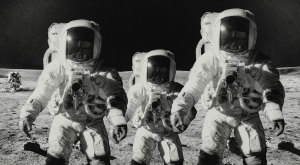 Krassimir Terziev, who immerses himself into in-depth research in his practice, aims to reflect the contradictions within the attempts of forming a civilized form of “space” in his exhibition “Future Unforgettable”. Space debris, technologies, astronaut gear and icons are a few of the main motifs Terziev uses throughout his array of work which focuses on the philosophical clash between human and machine. As one of the first artists in Bulgaria to shift their focus from classic media to the digital in the 1990s, Krassimir Terziev has developed his own analysis of the visual medium seeing it as at once an instrument, object and goal for the artwork. Through utilizing mediums of video/film, photography, painting/drawing all together, the artist presents a new temporary reality through a translucent relationship between time and space. Terziev, invites the viewer on a journey through utopias and paradigms of the invisible but imaginable, reminding us once again of the grand wish of the humankind to settle life in outer space. Svetlana Kuyumdzhieva states the following on the matter. Info: Curator: Fırat Arapoğlu, Versus Art Project, Gazeteci Erol Dernek Sokak No:11/3 Beyoglu Istanbul, Duration: 7/3-13/4/19, Days & Hours: Tue-Sat 11:00-19:00, www.versusartproject.com
Krassimir Terziev, who immerses himself into in-depth research in his practice, aims to reflect the contradictions within the attempts of forming a civilized form of “space” in his exhibition “Future Unforgettable”. Space debris, technologies, astronaut gear and icons are a few of the main motifs Terziev uses throughout his array of work which focuses on the philosophical clash between human and machine. As one of the first artists in Bulgaria to shift their focus from classic media to the digital in the 1990s, Krassimir Terziev has developed his own analysis of the visual medium seeing it as at once an instrument, object and goal for the artwork. Through utilizing mediums of video/film, photography, painting/drawing all together, the artist presents a new temporary reality through a translucent relationship between time and space. Terziev, invites the viewer on a journey through utopias and paradigms of the invisible but imaginable, reminding us once again of the grand wish of the humankind to settle life in outer space. Svetlana Kuyumdzhieva states the following on the matter. Info: Curator: Fırat Arapoğlu, Versus Art Project, Gazeteci Erol Dernek Sokak No:11/3 Beyoglu Istanbul, Duration: 7/3-13/4/19, Days & Hours: Tue-Sat 11:00-19:00, www.versusartproject.com
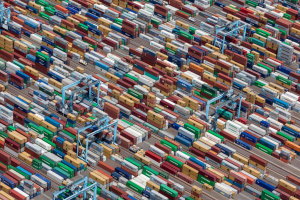 The monumental photography exhibition “Civilization: The Way We Live Now” features 250 artworks by120 photographers. The exhibition focuses on the development of human life on a global scale in the 21st Century, and the patterns of behavior, collaboration and conflict, production and consumption that now connect people to an unprecedented degree. While acknowledging the efforts of individuals to shape the world around them, and the differences between and among cultures, the exhibition focuses specifically on the collective achievements and tensions that narratives of individualism and heterogeneity tend to obscure. The exhibition is divided into eight thematic sections. “Hive” explores the intricate urban networks that have formed in today’s world. “Alonetogether” looks at the maintenance of social relationships. “Flow” takes as its subject the movement of peoples, goods, and ideas. “Persuasion” investigates the strategies we use to convince others and ourselves. “Control” examines humanity’s ability to create order, resolve disputes, and organize political and social structures. “Rupture” focuses on the breakdown of this order and the conflicts between individuals and collectives. “Escape” follows the ascent of recreational culture.The last section, “Next,” looks at the new world taking shape in the 21st century, ranging from the genetically modified to the models, reminiscent of digital avatars. Info: Curators: William A. Ewing and Holly Roussell, UCCA Center for Contemporary Art, 798 Art District, No. 4 Jiuxianqiao Road, Chaoyang District, Beijing, Duration: 9/3-19/5/19, Days & Hours: Mon-Sun 10:00-19:00, http://ucca.org.cn
The monumental photography exhibition “Civilization: The Way We Live Now” features 250 artworks by120 photographers. The exhibition focuses on the development of human life on a global scale in the 21st Century, and the patterns of behavior, collaboration and conflict, production and consumption that now connect people to an unprecedented degree. While acknowledging the efforts of individuals to shape the world around them, and the differences between and among cultures, the exhibition focuses specifically on the collective achievements and tensions that narratives of individualism and heterogeneity tend to obscure. The exhibition is divided into eight thematic sections. “Hive” explores the intricate urban networks that have formed in today’s world. “Alonetogether” looks at the maintenance of social relationships. “Flow” takes as its subject the movement of peoples, goods, and ideas. “Persuasion” investigates the strategies we use to convince others and ourselves. “Control” examines humanity’s ability to create order, resolve disputes, and organize political and social structures. “Rupture” focuses on the breakdown of this order and the conflicts between individuals and collectives. “Escape” follows the ascent of recreational culture.The last section, “Next,” looks at the new world taking shape in the 21st century, ranging from the genetically modified to the models, reminiscent of digital avatars. Info: Curators: William A. Ewing and Holly Roussell, UCCA Center for Contemporary Art, 798 Art District, No. 4 Jiuxianqiao Road, Chaoyang District, Beijing, Duration: 9/3-19/5/19, Days & Hours: Mon-Sun 10:00-19:00, http://ucca.org.cn
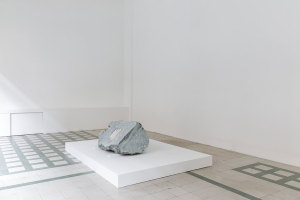 As in 2015, Francesco Arena’s exhibition “Tre sequenze per voce sola” is articulated in the three Galleria Raffaella Cortes’s spaces, with the same ratio of one work for each room. Consistent with the artist’s research interlacing historic memory, shared and private, The exhibition marks a new chapter in Arena’s poetics. The title, taking after the “sequenze” by composer Luciano Berio, conceptually unfolds the partition of the show: three works by three stories, each narrated by a single voice, where history, time and space are blurred. The works composing the exhibition are three non-fiction narratives. Cyclically, motifs undercurrent Arena’s production come back and are investigated anew: the fascination towards the numeric domain, often determining the formal aspect of the works, the reflection about the flowing of Time and the concept of monument as memory and sign. On show are “Angolo Scontento (Hommage à la mort de Sigmund Freud) [Discontent Corner]”, “Linea finita (orizzonte Gianluigi’ and “Marmo con 3274 giorni”. Info: Galleria Raffaella Cortese, via Stradella 1, via Stradella 4 and via Stradella 7, Milan, Duration: 13/3-24/4/19, Days & Hours: Tue-Sat 10:00-13:00 & 15:00-19:30, https://raffaellacortese.com
As in 2015, Francesco Arena’s exhibition “Tre sequenze per voce sola” is articulated in the three Galleria Raffaella Cortes’s spaces, with the same ratio of one work for each room. Consistent with the artist’s research interlacing historic memory, shared and private, The exhibition marks a new chapter in Arena’s poetics. The title, taking after the “sequenze” by composer Luciano Berio, conceptually unfolds the partition of the show: three works by three stories, each narrated by a single voice, where history, time and space are blurred. The works composing the exhibition are three non-fiction narratives. Cyclically, motifs undercurrent Arena’s production come back and are investigated anew: the fascination towards the numeric domain, often determining the formal aspect of the works, the reflection about the flowing of Time and the concept of monument as memory and sign. On show are “Angolo Scontento (Hommage à la mort de Sigmund Freud) [Discontent Corner]”, “Linea finita (orizzonte Gianluigi’ and “Marmo con 3274 giorni”. Info: Galleria Raffaella Cortese, via Stradella 1, via Stradella 4 and via Stradella 7, Milan, Duration: 13/3-24/4/19, Days & Hours: Tue-Sat 10:00-13:00 & 15:00-19:30, https://raffaellacortese.com
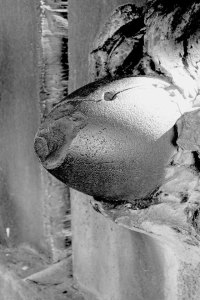 Since the mid-1990s, Alexandre Estrela’s work has been distinguished by the original and idiosyncratic manner in which it brings together and superimposes a wide range of domains, themes and references. His exhibition “Metal Hurlant” brings together nine recently-produced works, four of which have not been publicly exhibited to date. In these works, the artist continues to explore issues and themes related to the qualities of (technical) images and the intrinsic potential of devices to capture, edit and display images, particularly in the field of video. For the artist, the eminently factitious and paradoxical character of the image implicates an entire field of possibilities to reformulate (destabilise, circumvent, expand) the arc of relations and transmutations between image, medium and perception. However, in this exhibition—of which the title offers us a first indication—the presence of a specific material stands out: metal. A material examined both as a theme and as a physical feature of some of the projection screens, the works are thus strongly committed to their physical and spatial conditions, highlighting the sculptural and architectural aspects of Alexandre Estrela’s work. Info: Curator: Sérgio Mah, Fondation Calouste Gulbenkian – Délégation en France, 39 bd de la Tour-Maubourg, Paris, Duration: 13/3-16/6/19, Days & Hours: Mon & Wed-Fri 9:00-18:00, Sat-Sun 11:00-18:00, https://gulbenkian.pt
Since the mid-1990s, Alexandre Estrela’s work has been distinguished by the original and idiosyncratic manner in which it brings together and superimposes a wide range of domains, themes and references. His exhibition “Metal Hurlant” brings together nine recently-produced works, four of which have not been publicly exhibited to date. In these works, the artist continues to explore issues and themes related to the qualities of (technical) images and the intrinsic potential of devices to capture, edit and display images, particularly in the field of video. For the artist, the eminently factitious and paradoxical character of the image implicates an entire field of possibilities to reformulate (destabilise, circumvent, expand) the arc of relations and transmutations between image, medium and perception. However, in this exhibition—of which the title offers us a first indication—the presence of a specific material stands out: metal. A material examined both as a theme and as a physical feature of some of the projection screens, the works are thus strongly committed to their physical and spatial conditions, highlighting the sculptural and architectural aspects of Alexandre Estrela’s work. Info: Curator: Sérgio Mah, Fondation Calouste Gulbenkian – Délégation en France, 39 bd de la Tour-Maubourg, Paris, Duration: 13/3-16/6/19, Days & Hours: Mon & Wed-Fri 9:00-18:00, Sat-Sun 11:00-18:00, https://gulbenkian.pt
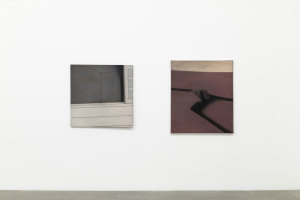 In post-war Europe, Adrian Morris was an invested observer of technological progress (eg. space flight) and the plight of life in and around human societies. During this time, he developed a concise body of work that projects utopian and apocalyptic visions alike and, as such, comments as much on modernity’s trauma as it venerates its outlook. A selection of his paintings is on show at the exhibition “Adrian Morris, works 1956-2004, a selection by Tenzing Barshee”. Adrian Morris’ curiosity revolved around the distribution of images and their reproducibility. He studied different types of news photography, mostly aerial or architectural shots found in newspapers and magazines. The photographic materials became points of departure in many of his paintings. He set out to arrest the impression that an image might leave and by turning it into a physical reflection, a barely abstract painterly object. Although Adrian Morris made his works, in the tradition of abstract painting, as flat, literal physical objects, they often reflect the subjects from which they were sourced. Info: Galerie Neu GmbH & Co.KG, Linienstraße 119 abc, Berlin, Duration : 15/3-13/4/19, Days & Hours: Tue-Sat 11:00-18:00, http://galerieneu.net
In post-war Europe, Adrian Morris was an invested observer of technological progress (eg. space flight) and the plight of life in and around human societies. During this time, he developed a concise body of work that projects utopian and apocalyptic visions alike and, as such, comments as much on modernity’s trauma as it venerates its outlook. A selection of his paintings is on show at the exhibition “Adrian Morris, works 1956-2004, a selection by Tenzing Barshee”. Adrian Morris’ curiosity revolved around the distribution of images and their reproducibility. He studied different types of news photography, mostly aerial or architectural shots found in newspapers and magazines. The photographic materials became points of departure in many of his paintings. He set out to arrest the impression that an image might leave and by turning it into a physical reflection, a barely abstract painterly object. Although Adrian Morris made his works, in the tradition of abstract painting, as flat, literal physical objects, they often reflect the subjects from which they were sourced. Info: Galerie Neu GmbH & Co.KG, Linienstraße 119 abc, Berlin, Duration : 15/3-13/4/19, Days & Hours: Tue-Sat 11:00-18:00, http://galerieneu.net
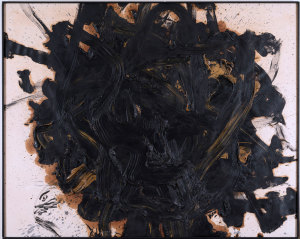 A selection of Kazuo Shiraga’s gestural canvases, from the 1980s and ’90s including several large-scale oil-on-paper paintings is on view at Fergus McCaffrey Gallery in Tokyo. Kazuo Shiraga was born in 1924 in Amagasaki, Japan. After studying Nihon-ga (Japanese-style painting) in Kyoto and growing frustrated with the stylistic and material confines he found in Nihon-ga, Shiraga participated in Gendai Bijutsu Kondankai (Contemporary Art Discussion Group) with several other students and began experimenting with making oil paintings using his hands and fingers. Shiraga found the viscosity of tube-ready oil paint more “free” than the inconvenient and thin ink-based pigments he had used in painting school. In 1955, Shiraga joined the Japanese Avant-Garde collective Gutai and was inspired by Gutai’s leader, Jiro Yoshihara, to further push his performative, material-driven painting practice in order to “make something that never existed” before. During his time as a member of Gutai, Shiraga simultaneously pursued oil painting and performance, often integrating the two practices in performance-painting pieces as “Challenging Mud” (1955), in which the artist used his entire body to manipulate mud as if it were thick, pliable paint, and “Ultramodern Sanbaso” (1957), in which he wore a dramatic red costume with elongated and wing-like arms, his movements creating slashes of color against the stark black backdrop of the stage. Shiraga continued this exploration of the relationship between body and material over the course of his career, and is best known for the large-scale foot paintings he made well into his eighties. Info: at Fergus McCaffrey Gallery, 3-5-9 Kita-Aoyama, Minato-ku, Tokyo, Duration: 23/3-18/5/19, Days & Hours: Tue-Sat 11:00-19:00, http://fergusmccaffrey.com
A selection of Kazuo Shiraga’s gestural canvases, from the 1980s and ’90s including several large-scale oil-on-paper paintings is on view at Fergus McCaffrey Gallery in Tokyo. Kazuo Shiraga was born in 1924 in Amagasaki, Japan. After studying Nihon-ga (Japanese-style painting) in Kyoto and growing frustrated with the stylistic and material confines he found in Nihon-ga, Shiraga participated in Gendai Bijutsu Kondankai (Contemporary Art Discussion Group) with several other students and began experimenting with making oil paintings using his hands and fingers. Shiraga found the viscosity of tube-ready oil paint more “free” than the inconvenient and thin ink-based pigments he had used in painting school. In 1955, Shiraga joined the Japanese Avant-Garde collective Gutai and was inspired by Gutai’s leader, Jiro Yoshihara, to further push his performative, material-driven painting practice in order to “make something that never existed” before. During his time as a member of Gutai, Shiraga simultaneously pursued oil painting and performance, often integrating the two practices in performance-painting pieces as “Challenging Mud” (1955), in which the artist used his entire body to manipulate mud as if it were thick, pliable paint, and “Ultramodern Sanbaso” (1957), in which he wore a dramatic red costume with elongated and wing-like arms, his movements creating slashes of color against the stark black backdrop of the stage. Shiraga continued this exploration of the relationship between body and material over the course of his career, and is best known for the large-scale foot paintings he made well into his eighties. Info: at Fergus McCaffrey Gallery, 3-5-9 Kita-Aoyama, Minato-ku, Tokyo, Duration: 23/3-18/5/19, Days & Hours: Tue-Sat 11:00-19:00, http://fergusmccaffrey.com
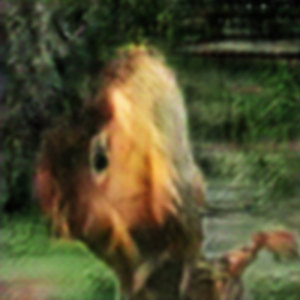 For over twenty years, Casey Reas has worked within the tradition of conceptual art through his preferred medium of software. For Reas, software is an extension of his internal abilities to think and explore, rather than a production tool. The “Untitled Film Stills” and “Earthly Delights” series are presented in his exhibition “Compressed Cinema” both started as responses to the photographs of Cindy Sherman and the films of Stan Brakhage, respectively. Over time, the work evolved into its current form. Each image in “Untitled Film Stills” is a frame from an imagined film. The full set of images defines a more complete perspective of the possible scenes. The small scale of the images invites close proximity for viewing and encourages attention toward the details. The “Earthly Delights series” is a collection of videos of infinite duration created from a set of fixed frames and controlled live by custom software. The source material is generated from scans of summer vegetation collected at Burnt Mountain in Colorado. The software edits the frames into different sequences and presents them with changing speeds and rhythms. Info: DAM Gallery, Seydelstr. 30, Berlin, Duration: 23/3-4/5/19, Days & Hours: Wed-Fri 13:00-18:00, Sat 12:00-16:00, https://dam-gallery.de
For over twenty years, Casey Reas has worked within the tradition of conceptual art through his preferred medium of software. For Reas, software is an extension of his internal abilities to think and explore, rather than a production tool. The “Untitled Film Stills” and “Earthly Delights” series are presented in his exhibition “Compressed Cinema” both started as responses to the photographs of Cindy Sherman and the films of Stan Brakhage, respectively. Over time, the work evolved into its current form. Each image in “Untitled Film Stills” is a frame from an imagined film. The full set of images defines a more complete perspective of the possible scenes. The small scale of the images invites close proximity for viewing and encourages attention toward the details. The “Earthly Delights series” is a collection of videos of infinite duration created from a set of fixed frames and controlled live by custom software. The source material is generated from scans of summer vegetation collected at Burnt Mountain in Colorado. The software edits the frames into different sequences and presents them with changing speeds and rhythms. Info: DAM Gallery, Seydelstr. 30, Berlin, Duration: 23/3-4/5/19, Days & Hours: Wed-Fri 13:00-18:00, Sat 12:00-16:00, https://dam-gallery.de
 Giuseppe Adamo formed in the creative forge of Palermo which has imposed to the national attention for its pictorial research in the last decades. The treatment of the canvas by this artist puts the observer in front of an intriguing perception where everything gets confused, pushing him to find a personal and stimulating visual synthesis. Giuseppe Adamo’s title for his solo exhibition “LANDING”, discloses an inspiration that, in ancestral genetic recesses, draws from nature and landscape. Nevertheless, it distances immediately from them to free from the urgency of the narration and to migrate towards a hybrid land of conflict between figuration and abstraction. The acrylic paintings in Venice hesitates on this perceptual misinterpretation too, showing dense weavings with a vague organic imprinting even proudly aniconic, they are changing tracks looking for an identity between colors and light. The same happens in his paper works, where the field becomes wider but the pseudo-organic atmosphere, which recalls hematic scenarios, lasts. It is impossible to link this original approach to evocative models: only for a speculative taste, we could connect it to a kind of lyrical abstract art, which reminds the vibrations of Rothko’s Color Field. Info: Marignana Arte, Dorsoduro 141, Rio Terà dei Catecumeni, Venice, Duration: 23/3-20/4/19, Days & Hours: Tue-Wed 14:00-18:30, Thu-Sat 11:00-13:30 & 14:00-18:30, www.marignanaarte.it
Giuseppe Adamo formed in the creative forge of Palermo which has imposed to the national attention for its pictorial research in the last decades. The treatment of the canvas by this artist puts the observer in front of an intriguing perception where everything gets confused, pushing him to find a personal and stimulating visual synthesis. Giuseppe Adamo’s title for his solo exhibition “LANDING”, discloses an inspiration that, in ancestral genetic recesses, draws from nature and landscape. Nevertheless, it distances immediately from them to free from the urgency of the narration and to migrate towards a hybrid land of conflict between figuration and abstraction. The acrylic paintings in Venice hesitates on this perceptual misinterpretation too, showing dense weavings with a vague organic imprinting even proudly aniconic, they are changing tracks looking for an identity between colors and light. The same happens in his paper works, where the field becomes wider but the pseudo-organic atmosphere, which recalls hematic scenarios, lasts. It is impossible to link this original approach to evocative models: only for a speculative taste, we could connect it to a kind of lyrical abstract art, which reminds the vibrations of Rothko’s Color Field. Info: Marignana Arte, Dorsoduro 141, Rio Terà dei Catecumeni, Venice, Duration: 23/3-20/4/19, Days & Hours: Tue-Wed 14:00-18:30, Thu-Sat 11:00-13:30 & 14:00-18:30, www.marignanaarte.it
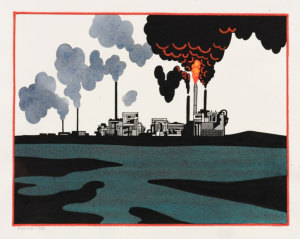 Ken Price’s works on paper in his solo exhibition “Works on Paper: 1967-1995” pull from the everyday and the impossible. His subject matters range from interior scenes devoid of objects or figural representation to exterior landscapes rampant with cars, freeways, billboards, and neon signs. A constant favorite, and a form that he explored at length in both his drawings and sculptures, is the cup. Price saw the cup as a “pre-ordained structure” and pursued it until the form lost is functional allure and became a biomorphic abstraction. Cups provided a pre-established structure that could be worked over and stretched out without breaking. In a conversation with artist Vija Celmins, Price mentions how he was pursuant of a “local truth, which is limited but specific.” This negated the notions of abstract expressionism that came before him and the exploration of a universal truth that was devoid of everything but the purity of the work itself. Price was after a genuine guttural reaction that elicited an emotional response-something more human and playful at times. Info: Kayne Griffin Corcoran, 1201 S La Brea Avenue, Los Angeles, Duration: 23/3-5/4/19, Days & Hours: Tue-Sat 10:00-18:00, www.kaynegriffincorcoran.com
Ken Price’s works on paper in his solo exhibition “Works on Paper: 1967-1995” pull from the everyday and the impossible. His subject matters range from interior scenes devoid of objects or figural representation to exterior landscapes rampant with cars, freeways, billboards, and neon signs. A constant favorite, and a form that he explored at length in both his drawings and sculptures, is the cup. Price saw the cup as a “pre-ordained structure” and pursued it until the form lost is functional allure and became a biomorphic abstraction. Cups provided a pre-established structure that could be worked over and stretched out without breaking. In a conversation with artist Vija Celmins, Price mentions how he was pursuant of a “local truth, which is limited but specific.” This negated the notions of abstract expressionism that came before him and the exploration of a universal truth that was devoid of everything but the purity of the work itself. Price was after a genuine guttural reaction that elicited an emotional response-something more human and playful at times. Info: Kayne Griffin Corcoran, 1201 S La Brea Avenue, Los Angeles, Duration: 23/3-5/4/19, Days & Hours: Tue-Sat 10:00-18:00, www.kaynegriffincorcoran.com
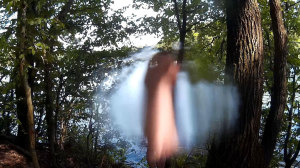 In “CIRCUMSCRIBE”, Rindon Johnson’s first institutional solo show in Europe, the artist examines material and conceptual forms of circulation and containment in relation to capital and consumption, privileging language, images, bodies, and technologies. Alongside existing paintings and sculptures, the exhibition features new videos and virtual reality works, a site-specific livestream installation, and a soundtrack produced in collaboration with Milo McBride. Johnson’s inquiries begin with language and return to it through the titles of his works, each of which emerges through the constant triangulation of poetry, the video or object, and the viewer. For Johnson, language is not supplemental but an integral part of each piece, it is just one of the many found, appropriated, recombined, and composed materials he uses to ask questions about agency and power. In this collision of language, object, and viewer, Johnson explores complex hierarchies that structure our societies, challenging their legitimacy and legibility. He does so by introducing radical subjectivity and intimacy to the work and by indulging in moments of ambiguity and ambivalence. Info: Julia Stoschek Collection Düsseldorf, Schanzenstraße 54, Düsseldorf, Duration: 31/3-28/7/19, Days & Hours: Sun 11:00-18:00, www.julia-stoschek-collection.net
In “CIRCUMSCRIBE”, Rindon Johnson’s first institutional solo show in Europe, the artist examines material and conceptual forms of circulation and containment in relation to capital and consumption, privileging language, images, bodies, and technologies. Alongside existing paintings and sculptures, the exhibition features new videos and virtual reality works, a site-specific livestream installation, and a soundtrack produced in collaboration with Milo McBride. Johnson’s inquiries begin with language and return to it through the titles of his works, each of which emerges through the constant triangulation of poetry, the video or object, and the viewer. For Johnson, language is not supplemental but an integral part of each piece, it is just one of the many found, appropriated, recombined, and composed materials he uses to ask questions about agency and power. In this collision of language, object, and viewer, Johnson explores complex hierarchies that structure our societies, challenging their legitimacy and legibility. He does so by introducing radical subjectivity and intimacy to the work and by indulging in moments of ambiguity and ambivalence. Info: Julia Stoschek Collection Düsseldorf, Schanzenstraße 54, Düsseldorf, Duration: 31/3-28/7/19, Days & Hours: Sun 11:00-18:00, www.julia-stoschek-collection.net
